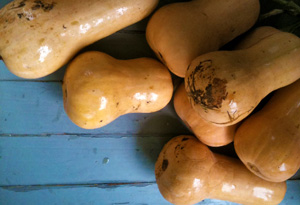I Dwell in Possibility

Photo: Simran Sethi
It's been over a year since eco-expert Simran Sethi purchased her historic home in the heart of Kansas. Did her foray into creating a environmentally friendly and energy-efficient home work out for the green girl?
Flow. Seamlessness. These are terms I have used—and sentiments I strove for—since the day I moved in to my house. One year ago, I closed on my house and opened up to the journey of home ownership. This messy, humbling and, hopefully, informative yearlong series has demonstrated to me that a relationship with a home, like any good relationship, is dynamic and challenging. While there have been many moments when I've pined away for my New York City rental (where bugs and mice were somebody else's problem), I've stuck it out. The paint on the walls, the cleaning supplies in the closet, the shelves in the kitchen, the seeds in the garden—in all of it I strove for fluidity and consistency.On my best days, I get there. Not just in the house, but in the ways it affirms and reflects my values. Not every day, just some days.
The most important lesson I have learned is that I can do more than I thought and that I could not have accomplished all that I did without the help of a lot of people. This kind of complexity gets to the heart of what I hope you will take away from my experience. Our relationships—with our houses, our loved ones, our natural world and all that is sacred—are messy, complex and evolving. Greening your home can be one small step toward making those relationships stronger. My hope is that it is not the only step, because everything we love—everything we care about and strive for—exists within an ecosystem we need to continue to nurture and protect.
If you have been following this series since the beginning, I thank you. Knowing you were out there helped me hold myself to a higher standard, and my 85-year-old home is better for it. If you've just joined me, I hope you'll peruse the archive to gain a better sense of this journey.
The CliffsNotes version is this: you can have a significant impact on energy and water conservation and reduce toxicity in your home through small changes. The biggest energy loss comes from air leaks, our greatest use of water comes from lawn care, and some of the most impactful sources of indoor air pollution are household cleaning products, paints and varnishes. Focusing on these few areas can not only reduce your environmental impact; they can also improve health and your quality of life.
The humble acts of weather stripping a window or changing a light bulb are meaningful. You do not need to seek out fancy stores (my standby Sears did me right on every energy-efficient appliance I needed) or spend exorbitant amounts of money to affect change. You do not need to put solar panels on your house or live in a yurt to "go green." What you need—what we need—is to be intentional, think about what is most important to us and let those cares seamlessly flow into our homes.
For me, this comes down to acts of self-care. My renovated kitchen, a hybrid of old and new, inspires me to take care of myself one home-cooked meal at a time. My garden, made abundant through a yardshare with my farming friend Mason, is bursting with butternut squash I harvested, picking food for the first time in decades. "The land," my friend Bryan Welch explains in his book Beautiful and Abundant, "like any true love, becomes more beautiful the more time you spend in intimate contact." I believe this intimacy extends to the house and to myself. Therefore, my most important effort is to conserve my own resources—and I encourage you to do the same.
In that spirit, I leave you with one opportunity to become more environmentally friendly—in the bedroom. I have given a lot of thought to how to go green between the sheets, but have only recently learned how important it is to consider what's below the sheets. We spend one-third of our lives in bed, snuggled among our mattresses, comforters and pillows—but according to Walter Bader's 2005 book Toxic Bedrooms we may be cozying up with a host of harmful man-made chemicals. During sleep, we are exposed to the many toxins used in mattress manufacturing (like boric acid, formaldehyde, benzene, naphthalene, pesticides, fungicides and flame-retardants). This is why I made it a priority to get a good bed. Savvy Rest was The Green Guide's top pick and mine too. Savvy Rest mattresses have a core of natural latex (as opposed to synthetic latex, which off-gases chemicals), organic wool batting and an organic cotton mattress cover (free of pesticides).
Give thanks. Take care of yourself. Harvest what you have, and reap what you sow.
With great affection and gratitude,
Simran
Simran Sethi is an award-winning journalist and associate professor at the University of Kansas School of Journalism and Mass Communications. You can continue to follow Simran Sethi's journey on Twitter @simransethi or on her website.



